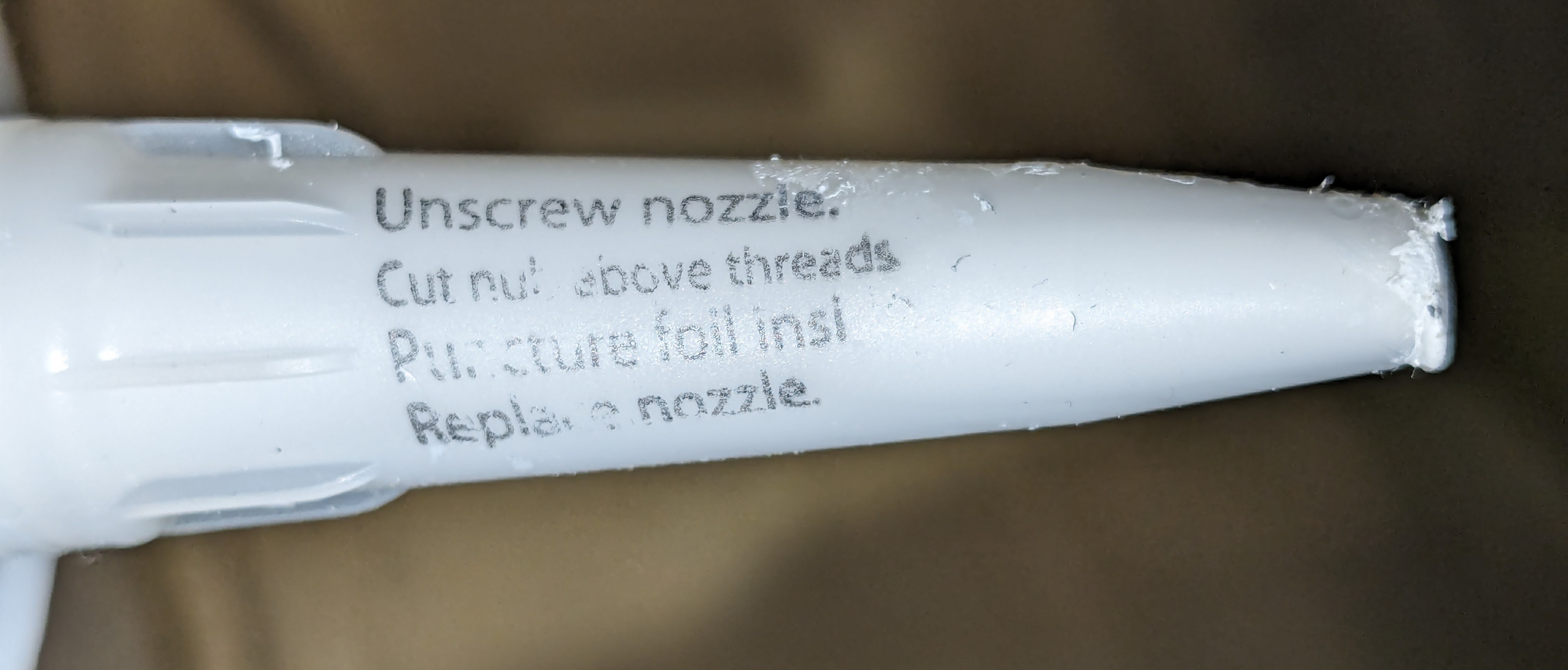Since my backerboard is GoBoard, I decided to use GoBoard Pro Sealant for the caulking. I picked up a couple of tubes when I picked up my GoBoard sheets. I figured if I didn't need both tubes, I could return one of them. That was naive. In the end, I needed to use seven tubes of caulk to seal the GoBoards. Ha, ha, the joke's on me.
Over the years, I've used tubes of caulk on several occasions. The recipe for using them is well-known: snip the end off the nozzle, poke something sharp down into the nozzle to break a foil seal, load the tube into the caulk gun, and away you go. When I tried that with the GoBoard sealant, it was very difficult to break that inner seal. I finally had to resort to using a thin screwdriver and pounding it through with a hammer (like a barbarian). When I tried to use the tube with the caulk gun, it was very difficult to get it to come out through the nozzle. More squeezed out through a seam in the tube's top cap than through the nozzle. What a mess.

I figured this tube was somehow defective. Maybe some top layer of the sealant had cured and become hard. I gave up on that first tube and turned to the second tube. It was then that I finally noticed the instructions printed on the nozzle itself.

Huh. I hadn't encountered that type of tube before or, in fact, any type of caulk tube where the nozzle could be removed. Under the nozzle, as part of the threads themselves, is a complete plastic barrier. It's easy to remove with a utility knife. I followed the instructions for that second tube, and things worked as expected. As for the first tube (first photo above), I let it rest overnight. That firmed up the leaked sealant enough that I could use that tube for the less precise work of covering the fastener locations. (The little red sock you see in that photo is a handy device for closing up a tube of caulk so the stuff in the nozzle doesn't start curing. It's like a tiny balloon or, well, some unmentionable thing that I'm sure you'll figure out.)
I mentioned that I greatly underestimated how many tubes I would need. There was lots of it around in nearby Lowes locations when I got the first couple of tubes, but when I looked to get more, there were only two tubes available at a single distant Lowes location. The manufacturer provides a list of acceptable alternative sealants. I finished the job with OSI® Quad® Max (Model 1868684). The OSI Quad Max also had that plastic seal arrangement (but no inner foil), so maybe that's a common thing that I just hadn't encountered before. Judging from the reviews of GoBoard Pro Sealant, I think it's a surprise to many DIYers.
The next photo shows the mostly complete caulking step. The regularly-spaced white blotches are the fastener locations. The only real difficulty I had (besides the giant mess that working with caulk can make) is that some of my gaps were wider than 1/8 inch in some places. A lot of sealant would be needed to fill the buckets of space behind the boards. I had to sort of build up beads of sealant until I could cover the whole gap.

 WJCarpenter
WJCarpenter
Discussions
Become a Hackaday.io Member
Create an account to leave a comment. Already have an account? Log In.